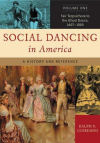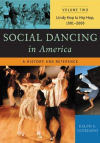


Official State Dances
| Official dances listed by adoption year. (List by state or year) | |||
| State | Name | Designated as | Year |
|---|---|---|---|
| Oregon | Square dance | Dance | 1977 |
| Washington | Square dance | Dance | 1979 |
| Tennessee | Square dance | Folk dance | 1980 |
| Alabama | Square dance | American folk dance | 1981 |
| New Jersey | Square dance | American folk dance | 1983 |
| South Carolina | Shag | Official Dance | 1984 |
| Florida | Square dance | American folk dance of the State of Florida | 1986 |
| West Virginia | Square dance | Folk dance | 1987 |
| California | Square dance | Folk dance | 1988 |
| California | West Coast swing dance | Dance | 1988 |
| Oklahoma | Square dance | Folk dance | 1988 |
| Idaho | Square dance | American folk dance | 1989 |
| Arizona | Square dance | Folk dance | 1990 |
| Illinois | Square dance | American folk dance | 1990 |
| Massachusetts | Square dancing | Folk dance | 1990 |
| Arkansas | Square dance | American folk dance | 1991 |
| Texas | Square dance | Folk dance | 1991 |
| Virginia | Square dance | Folk dance | 1991 |
| Colorado | Square dance | Folk Dance | 1992 |
| Wisconsin | Polka | Dance | 1993 |
| Delaware | Square dance | American folk dance | 1994 |
| Maryland | Square dance | Folk dance | 1994 |
| South Carolina | Square dance | Official American folk dance | 1994 |
| Utah | Square dance | Folk dance | 1994 |
| Connecticut | Square dance | Folk dance | 1995 |
| Mississippi | Square dance | American folk dance | 1995 |
| Missouri | Square dance | American folk dance | 1995 |
| North Dakota | Square dance | American folk dance | 1995 |
| Georgia | Square dance | Folk dance | 1996 |
| Nebraska | Square dance | American folk dance | 1997 |
| Hawaii | Hula | Dance | 1999 |
| Louisiana | Square dance | American folk dance | 1999 |
| North Carolina | Clogging | Official folk dance | 2005 |
| North Carolina | Shagging | Official popular dance | 2005 |
| Kentucky | Clogging | Dance | 2006 |
| Delaware | Square dance | American folk dance | 1994 |
| Alaska | [ None ] | ||
| Indiana | [ None ] | ||
| Iowa | [ None ] | ||
| Kansas | [ None ] | ||
| Maine | [ None ] | ||
| Michigan | [ None ] | ||
| Minnesota | [ None ] | ||
| Montana | [ None ] | ||
| Nevada | [ None ] | ||
| New Hampshire | [ None ] | ||
| New Mexico | [ None ] | ||
| New York | [ None ] | ||
| Ohio | [ None ] | ||
| Pennsylvania | [ None ] | ||
| Rhode Island | [ None ] | ||
| South Dakota | [ None ] | ||
| Vermont | [ None ] | ||
| Wyoming | [ None ] | ||

Social Dancing in America: A History and Reference (Volume One), by Ralph G. Giordano. 380 pages. Publisher: Greenwood (November 30, 2006) Social Dancing in America examines the role of social dancing in daily life from the first settlements in 1607 through the birth of the nation in 1776 and into the beginning of the 21st century. This two-volume set provides a history of American social dances including the Virginia Reel, Square Dancing, the Lindy Hop, Rock 'n' Roll, the Twist, Disco, Breakdancing, and Hip-Hop. Social Dancing in America places social dancing in a historical, social, cultural, and political context. Volume 1 explores the integral role that social dancing played in the lives of Americans from the first settlements in 1607 through the the 19th century, often in the most unlikely of ways. For example, readers may be surprised to learn that George Washington was a well-known aficionado of social dancing, and that he incorporated the etiquette and manners of dances such as the Minuet as a means of diplomacy to secure European allies during the Revolutionary War. After his death, Americans continued to celebrate his birthday with a grand ball that included dancing. |
|||

Social Dancing in America: A History and Reference (Volume Two), by Ralph G. Giordano. 428 pages. Publisher: Greenwood (November 30, 2006) Volume 2 places social dance in a 20th-Century context, illustrating how social dancing itself paralled the social, economic, and cultural traditions of each era. For example, segregation and the Jim Crow mentality was cemented in place all over the United States, and for much of the century, dancing and dance halls were strictly segregated. Segregation forced a mass migration north, and with it came the transformation of Delta Blues music into an American original—Jazz. Jazz gave birth to the Charleston, and later evolved into Swing, which created the Lindy Hop. Later, with the advent of television, programming such as American Bandstand, Soul Train, Dance Fever, and MTV greatly influenced dance styles and modern trends such as Rock 'n' Roll, Freestyle, Disco, Breakdancing, and Hip-Hop. |
|||
~~ OUR PARTNERS ~~
[ HOME
| LINK TO NETSTATE
| GUESTBOOK
]
[ SPONSORSHIPS/ADVERTISING
| PRIVACY STATEMENT
| CONTACT US
]
Site designed exclusively for NETSTATE.COM by NSTATE, LLC

NETSTATE.COM is a Trademark of NSTATE, LLC.
Copyright © by NSTATE, LLC. All rights reserved.
No copyright is claimed on non-original or licensed material.
Support NETSTATE
